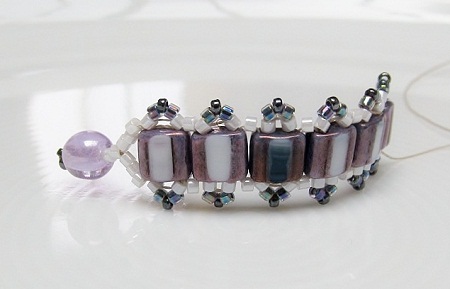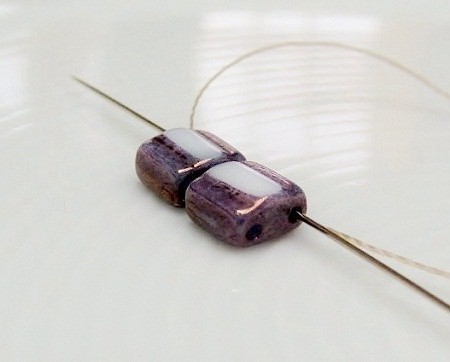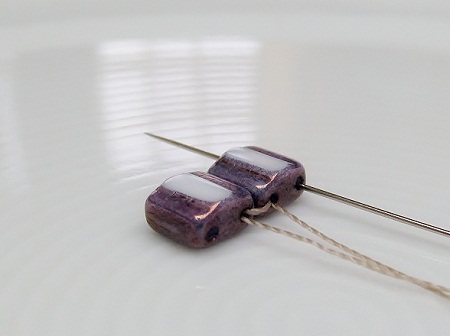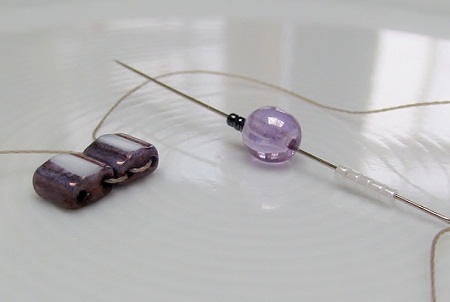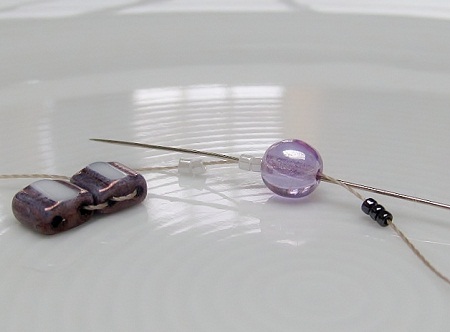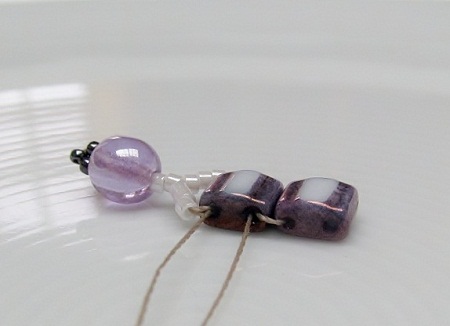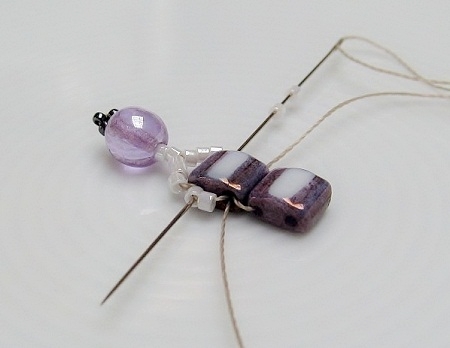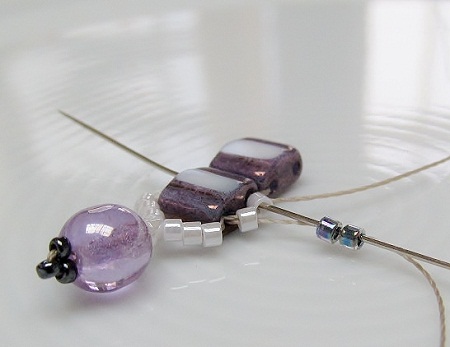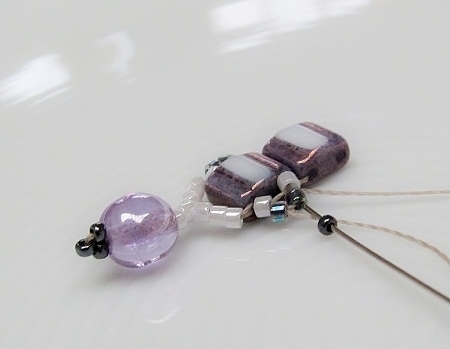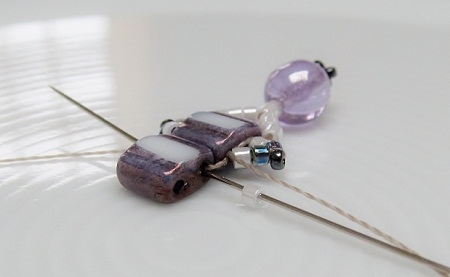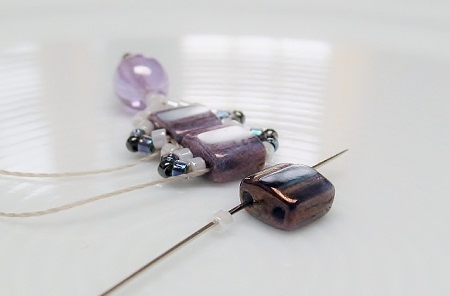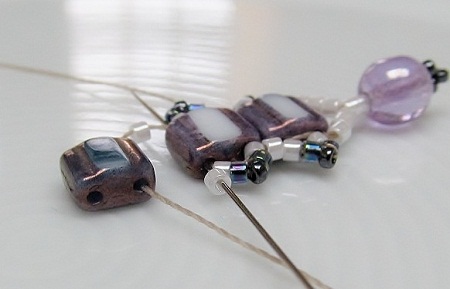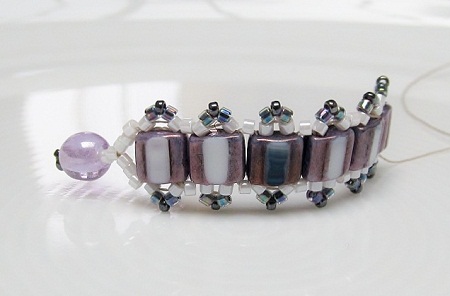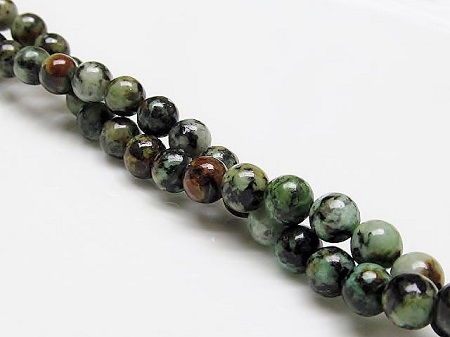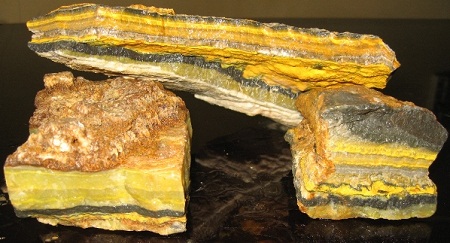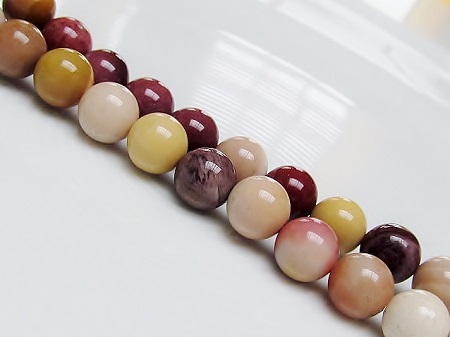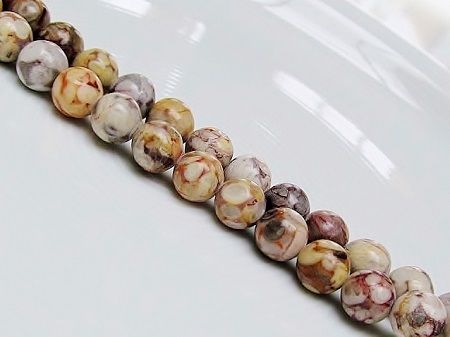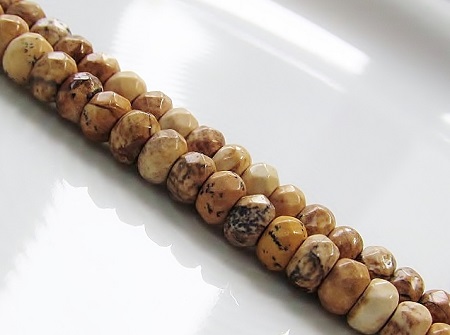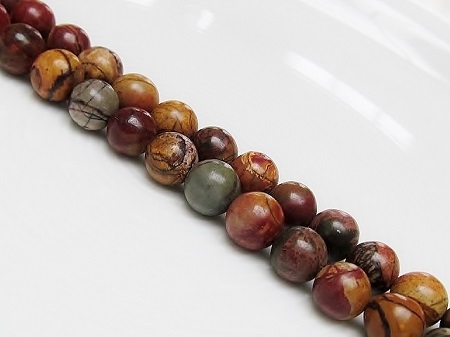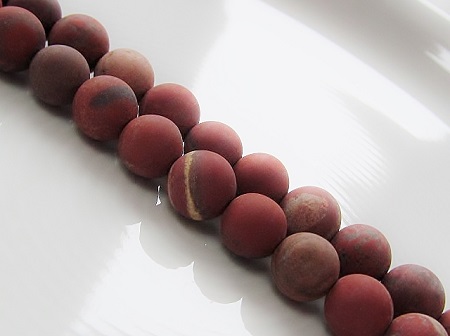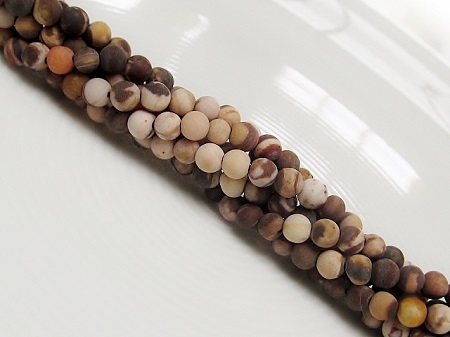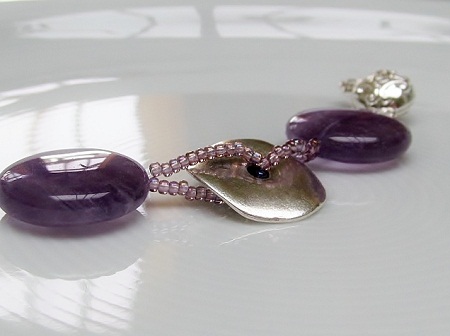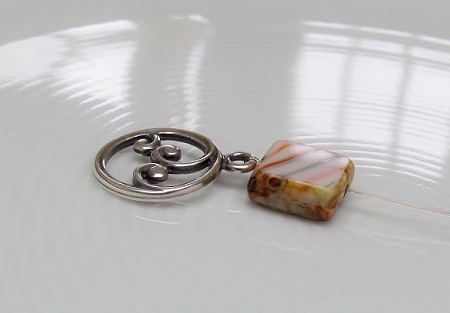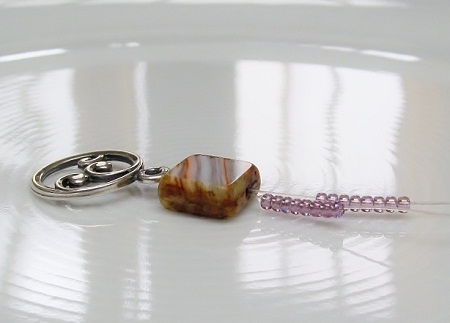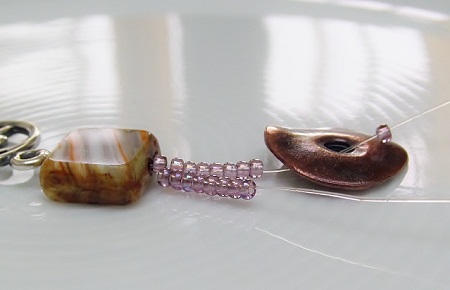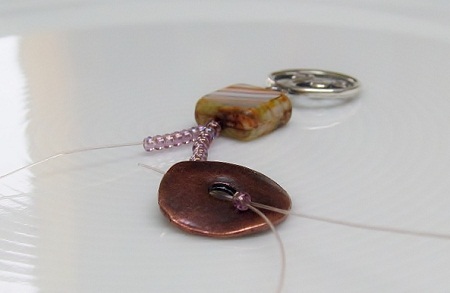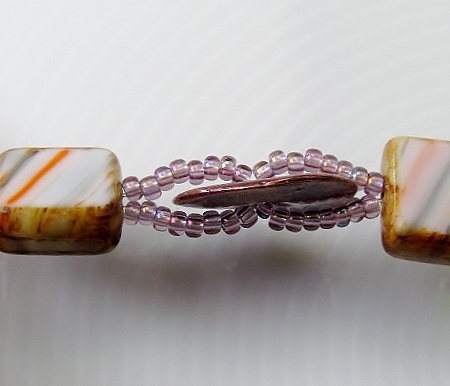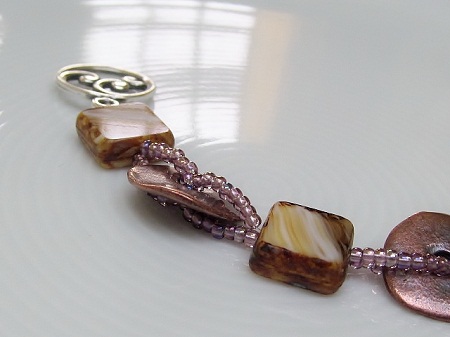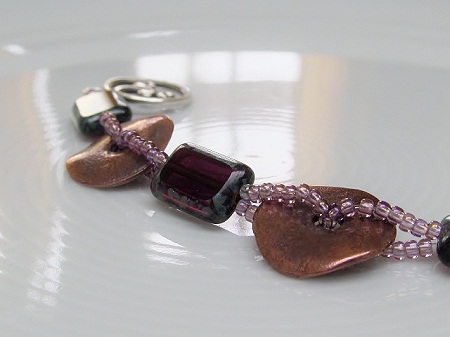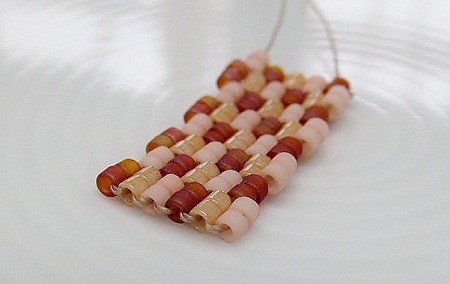Square "Silky" glass beads permit to create bold geometric lines and symmetry. The result is a decidedly modern, sleek bracelet with a luxurious feeling in Art Deco style.
Challenge:
- Mastering two-hole square beads by consistently working in a circle.
Supplies for the Art Deco bracelet :
- square https://dunebeads.com/en/czech-silky-tile-beads-in-2-sizes-2-shapes-with-2-holes
- Miyuki Delica 11/0 in two colors
- seed beads 15/0
- S-lon thread D
- John James needle no. 12
- scissors and a beading surface
Weaving instructions:
Starting:
- align two “Silky” beads and pass your needle on one side twice through both of them, leaving a tail thread of about 15 to 20 cm
- as you formed a circle, it permits you to reposition the two square beads side by side
- it follows that you have joined the middle of two “Silky” beads
- it has the added benefit that it also indicates the exact position of the clasp in relation to the bracelet
- in order to keep those 2 squares together you have to maintain tension in the tail thread, so wrap the tail thread around your fingers
Creating the clasp:
- pass your needle through the next hole situated on the outside of the same square bead
- add five Delica's, one 6 mm round bead and three 15/0 seed beads
- go back through the 6 mm round bead and the following two Delica's
- form the second leg of the clasp by adding three Delica's
- go through the hole on the other side of the “Silky” bead
- reinforce the clasp by making a second pass through it
- pass your needle through the other side of the same square bead
SEE - part 2




